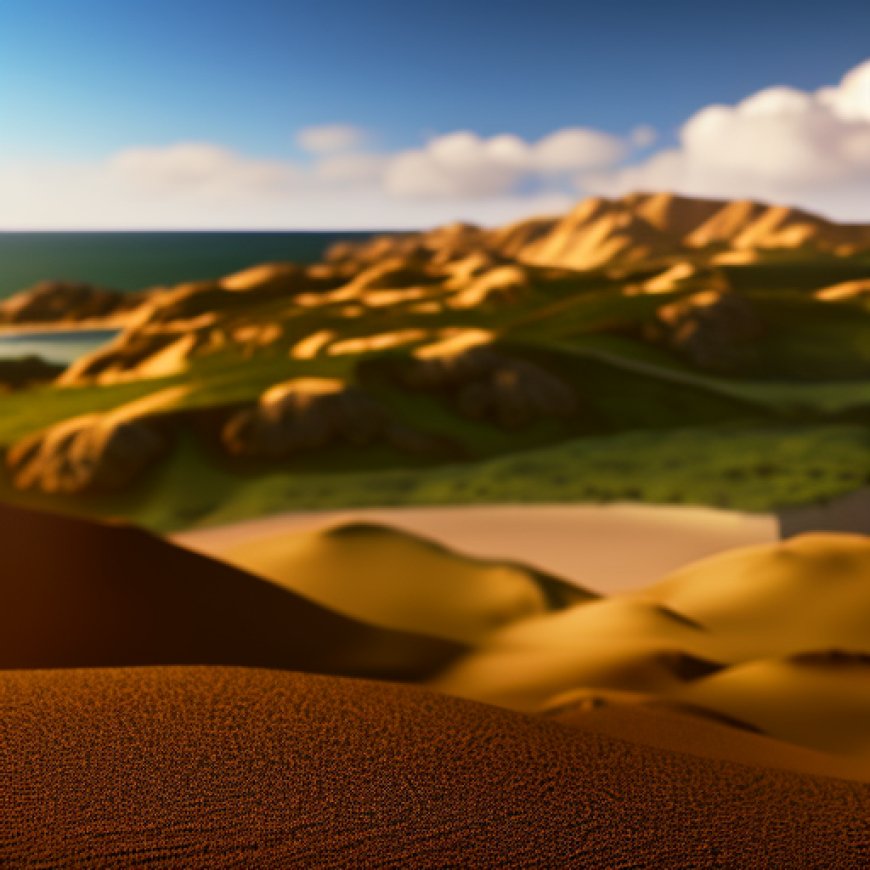Coastal Dune Habitat Restoration Projects – Point Reyes National Seashore (U.S. National Park Service)
Coastal Dune Habitat Restoration Projects - Point Reyes National Seashore (U.S National Park Service


Coastal Dune Restoration at Point Reyes National Seashore
The Point Reyes National Seashore has recently completed planning for the restoration of up to 600 acres of native dune habitat. This initiative aligns with the Sustainable Development Goals (SDGs) to protect, restore, and promote the sustainable use of terrestrial ecosystems and halt biodiversity loss.
Background
Since 2001, efforts have been made to remove invasive plant species such as European beachgrass and iceplant from the Seashore. These non-native plants have invaded more than 60% of the park’s coastal dunes, leading to a decline in reproductive success for endangered species like Tidestrom’s lupine and the western snowy plover.
Restoration Success
Initial restoration projects have shown success, with over 15,000 Tidestrom’s lupine plants germinating and western snowy plovers nesting in restored areas. These positive outcomes have prompted plans to expand restoration efforts to other dune systems within the park.
Environmental Assessment
The National Park Service issued a Finding of No Significant Impact for the Coastal Dune Restoration Environmental Assessment, which complies with the National Environmental Policy Act. The assessment considered three action alternatives for invasive plant removal and a No Action Alternative.
- Alternative B: Manual Removal
- Alternative C: Chemical Control (Preferred Alternative)
- Alternative D: Mechanical Removal
Minimizing Impacts
The restoration process includes measures to minimize impacts on threatened and endangered species, wetlands, and adjacent ranch operations. Efforts will be coordinated with ranchers to ensure minimal disruption.
Public Involvement
The Seashore released the Environmental Assessment for public review and comment in early 2015. For further information on the restoration process, contact Lorraine Parsons via email.
- Finding of No Significant Impact (FONSI)
- Coastal Dune Restoration Environmental Assessment
- Coastal Dune Restoration Project FAQs
Adobe® Acrobat Reader® may be needed to view PDF documents.
“`html
Analysis of Article on Coastal Dune Restoration
1. Which SDGs are addressed or connected to the issues highlighted in the article?
The issues highlighted in the article are primarily connected to the following Sustainable Development Goals (SDGs):
- SDG 14: Life Below Water
- SDG 15: Life on Land
2. What specific targets under those SDGs can be identified based on the article’s content?
Specific targets under the SDGs based on the article’s content include:
- Target 14.2: By 2020, sustainably manage and protect marine and coastal ecosystems to avoid significant adverse impacts, including by strengthening their resilience, and take action for their restoration to achieve healthy and productive oceans.
- Target 15.1: By 2020, ensure the conservation, restoration and sustainable use of terrestrial and inland freshwater ecosystems and their services, in particular forests, wetlands, mountains and drylands, in line with obligations under international agreements.
- Target 15.5: Take urgent and significant action to reduce the degradation of natural habitats, halt the loss of biodiversity, and by 2020 protect and prevent the extinction of threatened species.
3. Are there any indicators mentioned or implied in the article that can be used to measure progress towards the identified targets?
While the article does not explicitly mention indicators, the following can be implied:
- Indicator for Target 14.2: The extent of coastal dune habitat restored and the improvement in populations of coastal plant and bird species.
- Indicator for Target 15.1: The area of native dune habitat restored and the increase in populations of rare plant and animal species.
- Indicator for Target 15.5: The reproductive success rates of endangered species such as Tidestrom’s lupine and western snowy plover after restoration efforts.
4. Create a table with three columns titled ‘SDGs, Targets and Indicators’
| SDGs | Targets | Indicators |
|---|---|---|
| SDG 14: Life Below Water | Target 14.2: Sustainably manage and protect marine and coastal ecosystems. | Extent of coastal dune habitat restored; improvement in populations of coastal species. |
| SDG 15: Life on Land | Target 15.1: Ensure the conservation, restoration, and sustainable use of terrestrial ecosystems. | Area of native dune habitat restored; increase in populations of rare species. |
| SDG 15: Life on Land | Target 15.5: Reduce degradation of natural habitats and halt loss of biodiversity. | Reproductive success rates of endangered species post-restoration. |
“`
Copyright: Dive into this article, curated with care by SDG Investors Inc. Our advanced AI technology searches through vast amounts of data to spotlight how we are all moving forward with the Sustainable Development Goals. While we own the rights to this content, we invite you to share it to help spread knowledge and spark action on the SDGs.
Fuente: nps.gov

Join us, as fellow seekers of change, on a transformative journey at https://sdgtalks.ai/welcome, where you can become a member and actively contribute to shaping a brighter future.







